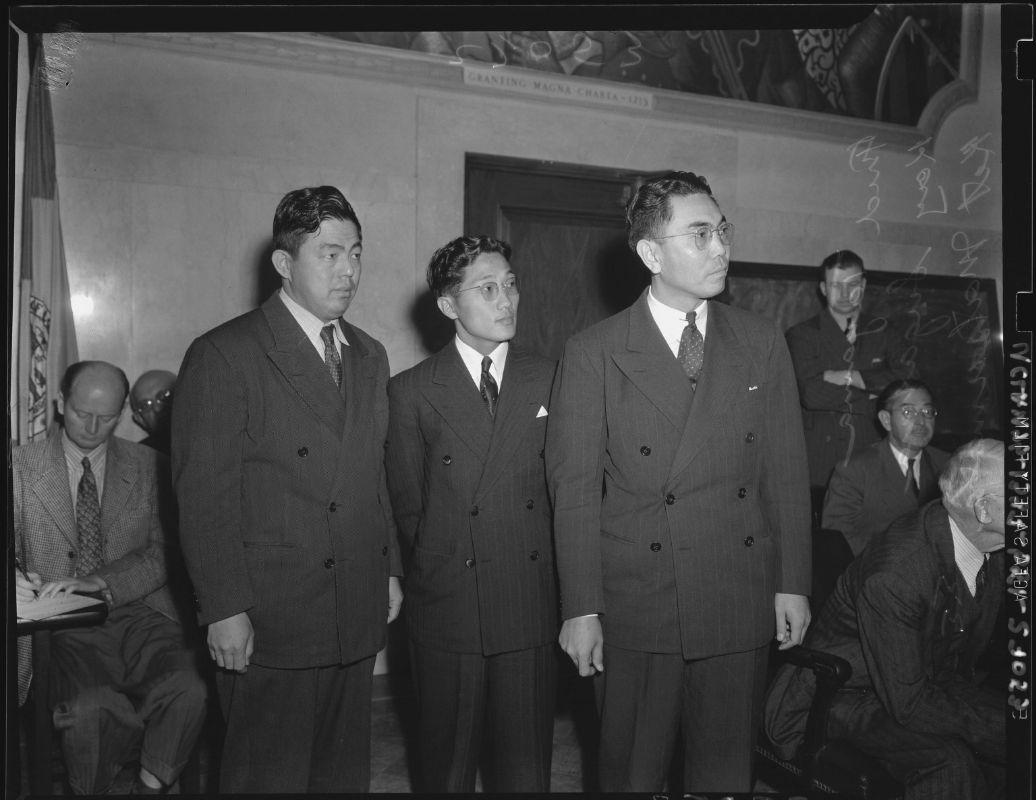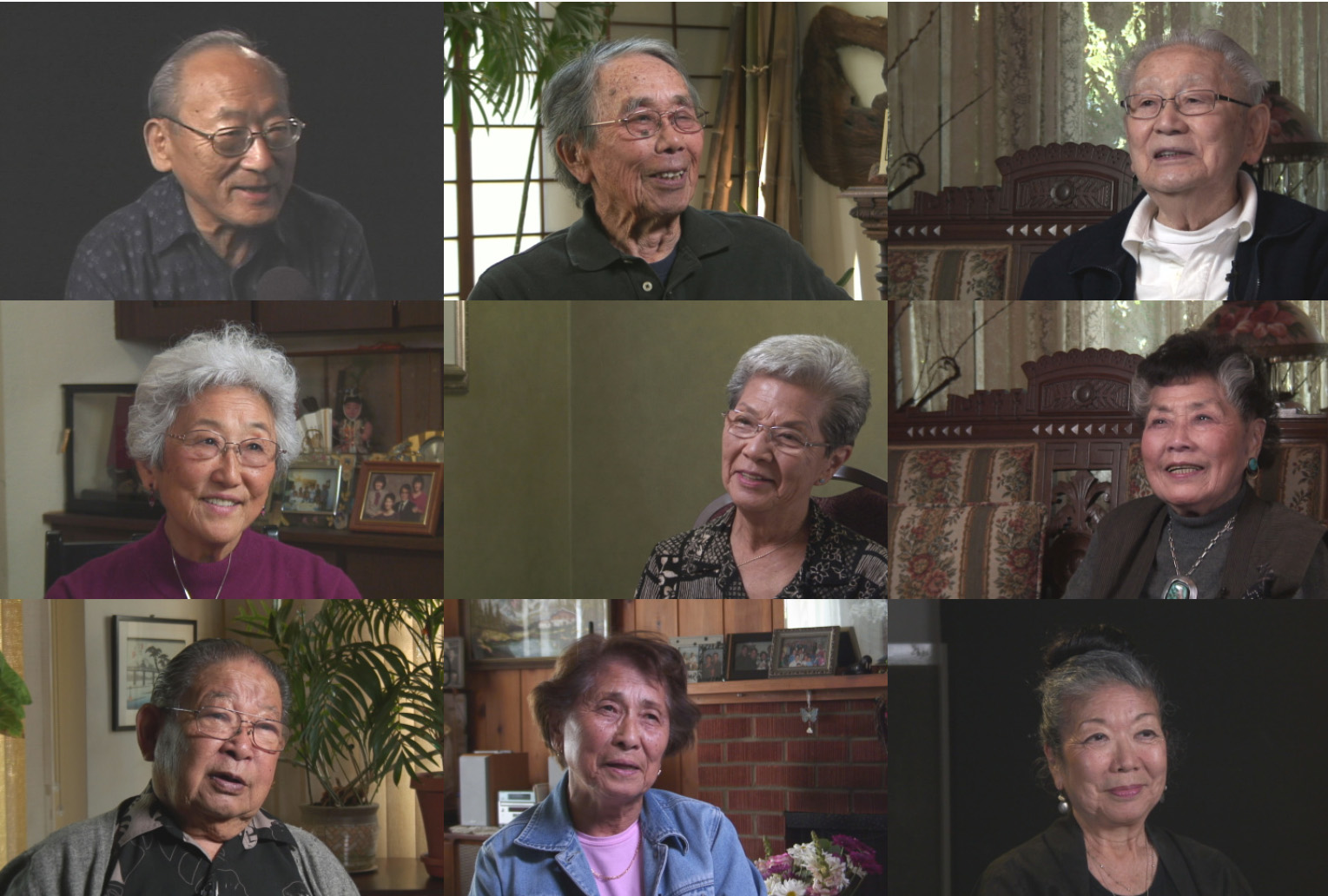December 5, 2017
In the autumn of 1942, Manzanar was home to a divided population of Japanese American inmates due to tensions that had been simmering since before Pearl Harbor. Members of the Japanese American Citizens League (JACL), in particular, were targets of disdain due to rumors that they had allied themselves with the FBI and Office of Naval Intelligence, as well as the general perception that they were more loyal to the U.S. government than to their own communities. Fred Tayama, a local JACL leader and Los Angeles businessman, was accused of exploiting Issei fears in the weeks prior to the mass removal, by charging them exorbitant fees for simple services. In general, many Japanese Americans—particularly Issei and Kibei—objected to the JACL strategy of encouraging cooperation with the mass removal, viewing those who promoted such an approach as race traitors. [1]

Once in the camp, broken promises and high turnover of administrators stoked inmate frustrations. Manzanar had begun under the administration of the Wartime Civil Control Administration (WCCA), a branch of the army, and later transferred to War Relocation Authority (WRA) administration. It had five managers/project directors in its first eight months of operation, and promises made under one administration were often broken by succeeding ones. Among a litany of grievances were the fact that inmates had been offered higher salaries than they were actually paid, salary checks were late, and many inmates believed that camp staffers were stealing supplies and selling them on the black market. For these and other reasons, animosity towards the administration—and by association, Japanese American inmates who worked with them—was high relative to other camps. [2]
Through the fall, a variety of occurrences added fuel to the smoldering resentments. But the immediate precipitating event to the riot/uprising was Tayama’s participation in a national JACL meeting in Salt Lake City in November. Among other recommendations adopted at the meeting, was one advocating that Nisei eligibility for the draft be restored. When Tayama returned to Manzanar, he was a marked man.

The “Riot”
On Saturday night, December 5 at around 8 pm, Fred Tayama was attacked by a group of six masked intruders in his barracks room in Block 28. A young woman passing by heard the commotion and screamed, causing the attackers to disperse. An ambulance conveyed Tayama to the hospital, where he was treated for a cut scalp and other non-life threatening injuries. Though he could not positively identify his attackers, Tayama fingered Harry Ueno as one of the culprits. Ueno was taken into custody and questioned, then taken by Assistant Project Director Ned Campbell outside the camp to the county jail in Independence. Two other suspects were also questioned through the night, but were released early the next morning.
The next morning a group of about 200 gathered at the Block 22 (Ueno’s block) mess hall. The group met briefly and adjourned, deciding to arrange a larger meeting at 1 pm. The 1 pm meeting drew an overflow crowd of over 2,000 and spilled into a neighboring firebreak. At the meeting, angry speeches by Joe Kurihara and others called for Ueno’s release under threat of a general strike. Prevailing sentiment was that Ueno’s arrest had more to do with his accusations that Campbell was stealing supplies from the camp than any role in the beating. Kurihara also called for the death of “inu”—a derogative term meaning “dog” in Japanese—on a “death list” he had made. [3] The meeting ended with the formation of a negotiating “Committee of Five” (CoF) who would be empowered to negotiate with Camp Director Ralph Merritt.
At about 1:30, the CoF, along with a large crowd, arrived at the administration building. By that time, Captain Martyn L. Hall, commanding officer of the military police detail at Manzanar, had assembled a group of about twelve soldiers who had entered the camp and who stood guard at the administration building armed with machine guns. [4] Escaping from the unruly crowd, Merritt met with the CoF and they reached an agreement: Ueno would be brought back to the jail at Manzanar and would be tried at Manzanar; in return, the CoF would disburse the crowd and agree not to hold further demonstrations or to attempt to free Ueno.
At 6:00 a crowd now consisting of some 2,000 to 4,000 people reconvened at Block 22’s mess hall and the firebreak. The CoF announced the return of Ueno and attempted to resign, but the crowd would not allow them. After a few speeches—including Kurihara’s further elaboration on the “death list” of fellow inmates, headed by Tayama and also including alleged “inu” Tokutaro Slocum, Karl Yoneda, Togo Tanaka, and others—the crowd became more agitated and two groups formed, one to go after those on the “death list” starting with the hospitalized Tayama, the other to go to the camp jail to attempt to free Ueno.
Sometime after 6:30, a group of 50–75 people arrived at the hospital, armed with whatever weapons they had been able to find. They were held off at the door by inmate women hospital workers. Meanwhile head inmate doctor James M. Goto and other staff hid Tayama on the lower shelf of a bed and covered him with blankets. Believing that Tayama had been removed from the hospital already, Morse Little, the chief medical officer at Manzanar, decided to allow five representatives of the group to search the hospital. When the group failed to find Tayama, they broke off into smaller groups to go after others on the list. Most on the list had been tipped off and had gone into hiding and so were not found that night.
A larger group of some 500 arrived at the police station at around 6:50 with the intent of freeing Ueno. Arthur L. Williams, the assistant chief of internal security at Manzanar, met with the CoF, pointing out that they had breached the agreement from earlier that day. When Williams informed Merritt of the situation—which also saw inmate police having largely scattered out of fear for their lives—Merritt gave the okay to bring back MPs to restore order. The first group of MPs arrived at 7:15. As Williams met with the CoF—Merritt’s attempts to get to the police station were stymied by the crowd—the crowd grew increasingly unruly, throwing stones and taunting the MPs. After Hall’s addresses to the crowd after 8 pm failed to break it up, he decided that force would be necessary. At around 9:30, he ordered tear gas fired into the crowd. In the ensuing chaos, the crowd aimed a car sans driver toward the police station, causing MPs to open fire on it. Two other MPs, Privates Ramon Cherubini and Tobe Moore, fired into the crowd on their own initiative. As the crowd disbursed, several casualties of the shootings remained behind. Through the night, mess hall bells tolled continuously, various meetings were held, and several alleged “inu” were beaten.
When the dust had settled, one young man, 17 year old James Ito of Los Angeles, had been killed by the gunfire; another, 21 year old Jim Kanagawa of Tacoma, would die of injuries several days later. Nine others were shot but survived. [5]

Two groups of inmates subsequently left Manzanar. The first group consisted of those the administration considered responsible for the unrest, including Ueno, members of the CoF, and twenty others. These men were arrested and held in jails in Lone Pine and Independence, though ten were later returned to Manzanar. The other sixteen ultimately were sent to a newly established prison camp in Moab, Utah, administered by the War Relocation Authority, then transferred to another such camp in April 1943 in Leupp, Arizona. Most ultimately ended up at post-segregation Tule Lake when Leupp closed in December 1943.
The other group to leave the camp were those who had been threatened with violence, including JACL-associated figures such as Tayama, Tanaka, Slocum, and others, including several who had been attacked and injured on Sunday night. Initially housed in the MPs’ barracks and administration building, sixty-five refugees were moved to the Cow Creek camp adjacent to the Death Valley National Monument. The group, which included the families of some of the men, remained there until arrangements could be made for their resettlement outside the restricted area. Several ultimately ended up moving to Chicago.
Back at Manzanar, inmates organized anew. A group of 108 elected delegates—three from each block—formed and threatened a general strike unless Ueno and the others were released. Block managers also distributed black arm bands, which most inmates chose to wear. An informal strike slowed camp operations, such as the schools, which remained closed until January 10. Additional military police were added, and they patrolled the camp for a few days. But gradually, conditions in the camp calmed and operations returned to “normal” in January, as the MPs’ presence gradually diminished.
A military investigation of the actions of the MPs in January 1943 exonerated them of any wrongdoing, concluding that Cherubini and Moore were justified in firing their weapons “because members of the mob were closing in and surging towards them.” [6]
Legacy
Due in part to the timing of the riot/uprising, many contemporaneous external accounts characterized it as a pro-Axis revolt commemorating the one-year anniversary of the attack on Pearl Harbor. It was part of a raft of negative publicity about the incarceration that led to Congressional investigations that put the WRA on the defensive. The event—along with similar unrest in other camps—influenced the WRA in developing and implementing a policy to identify and segregate the “disloyal” inmates and to encourage the “loyal” to leave the camps and “resettle” in communities outside the West Coast.
—
Adapted from Brian Niiya’s “Manzanar Riot/Uprising” article in the Densho Encyclopedia.
[Header photo: The cover of the December 9, 1942 edition of The Minidoka Irrigator. See the full image here.]
Notes
1. Togo Tanaka, “A Report on the Manzanar Riot of Sunday December 6, 1942,” The Japanese American Evacuation and Resettlement: A Digital Archive, Bancroft Library, University of California, call number BANC MSS 67/14 c, folder O10.12 (2/2), accessed on July 19, 2014 at http://digitalassets.lib.berkeley.edu/jarda/ucb/text/cubanc6714_b211o10_0012_2.pdf, quote from page 7; Deborah K. Lim, “Research Report Prepared for the Presidential Select Committee on JACL Resolution #7 (aka ‘The Lim Report’), 1990; Paul R. Spickard, “The Nisei Assume Power: The Japanese-American Citizen’s League, 1941-1942,” Pacific Historical Review 52 (May 1983), 158; Morton Grodzins, “The Manzanar Shooting,” The Japanese American Evacuation and Resettlement: A Digital Archive, Bancroft Library, University of California, call number BANC MSS 67/14 c, folder O10.04, accessed on Sept. 1, 2015 at http://digitalassets.lib.berkeley.edu/jarda/ucb/text/cubanc6714_b210o10_0004.pdf, pages 2–3, 13–14.
2. For more on inmate/keeper tensions at Manzanar, see Rita Takahashu Cates, “Comparative Administration and Management of Five War Relocation Authority Camps: America’s Incarceration of Persons of Japanese Descent during World War II” (Ph.D. dissertation, University of Pittsburgh, 1980), 223–25, 230–41; Arthur A. Hansen and David A. Hacker, “The Manzanar Riot: An Ethnic Perspective,” Amerasia Journal 2.2 (1974): 141.
3. Literally “dog” in Japanese, “inu” in this context means one suspected of being an informe
4. The 322nd Military Police Escort Guard Company that Hall led guarded the perimeter of the camp but did not normally enter the camp. Security within Manzanar was handled by an inmate police force under the direction of Gilkey and his deputy, Arthur L. Williams.
5. For a list of those shot, see Unrau, The Evacuation and Relocation, 487–88.
6. Unrau, The Evacuation and Relocation, 519–20.
